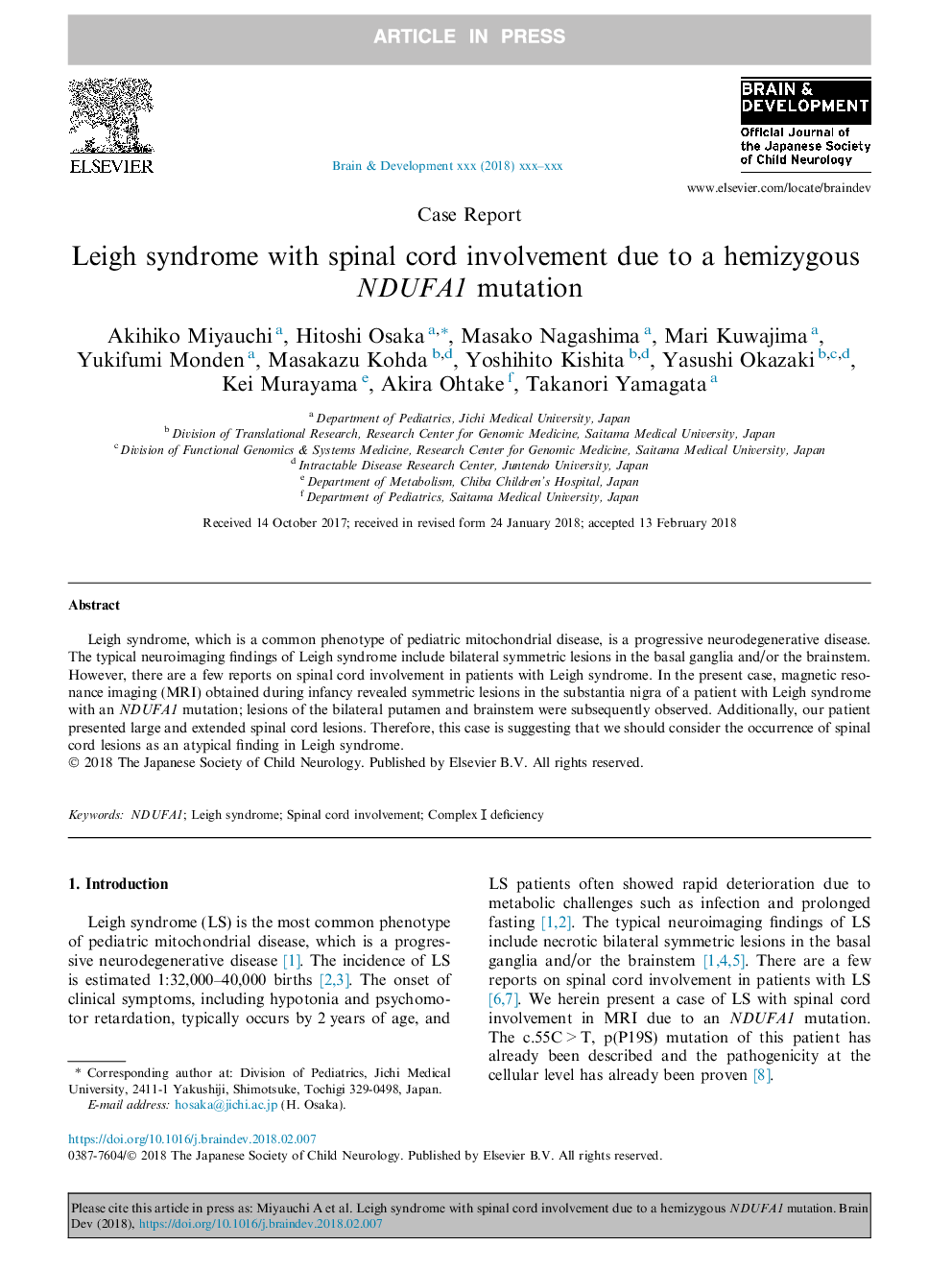| Article ID | Journal | Published Year | Pages | File Type |
|---|---|---|---|---|
| 8681188 | Brain and Development | 2018 | 5 Pages |
Abstract
Leigh syndrome, which is a common phenotype of pediatric mitochondrial disease, is a progressive neurodegenerative disease. The typical neuroimaging findings of Leigh syndrome include bilateral symmetric lesions in the basal ganglia and/or the brainstem. However, there are a few reports on spinal cord involvement in patients with Leigh syndrome. In the present case, magnetic resonance imaging (MRI) obtained during infancy revealed symmetric lesions in the substantia nigra of a patient with Leigh syndrome with an NDUFA1 mutation; lesions of the bilateral putamen and brainstem were subsequently observed. Additionally, our patient presented large and extended spinal cord lesions. Therefore, this case is suggesting that we should consider the occurrence of spinal cord lesions as an atypical finding in Leigh syndrome.
Keywords
Related Topics
Life Sciences
Neuroscience
Developmental Neuroscience
Authors
Akihiko Miyauchi, Hitoshi Osaka, Masako Nagashima, Mari Kuwajima, Yukifumi Monden, Masakazu Kohda, Yoshihito Kishita, Yasushi Okazaki, Kei Murayama, Akira Ohtake, Takanori Yamagata,
